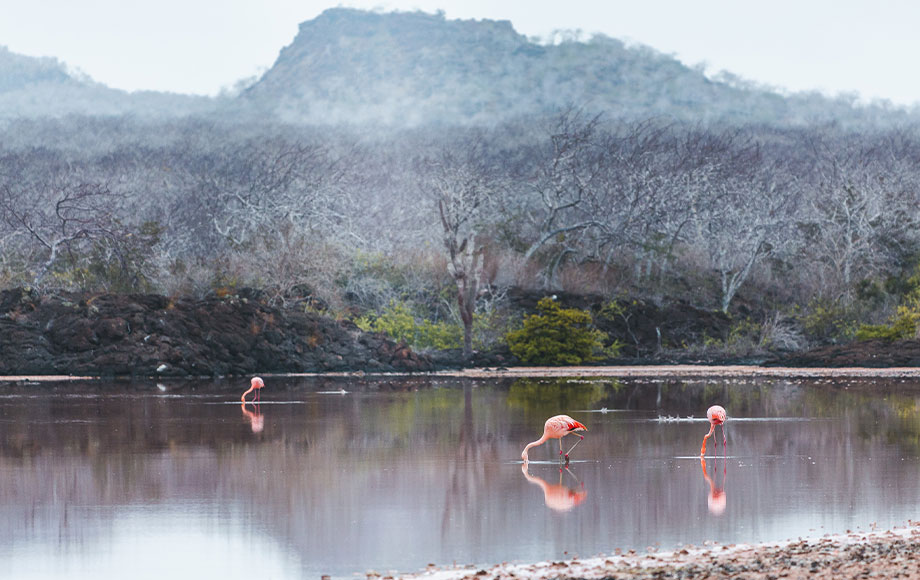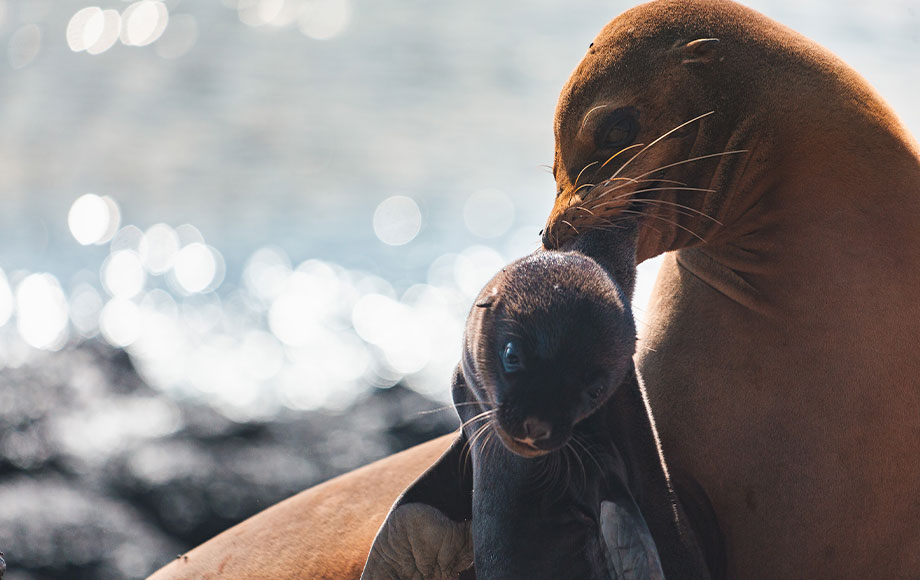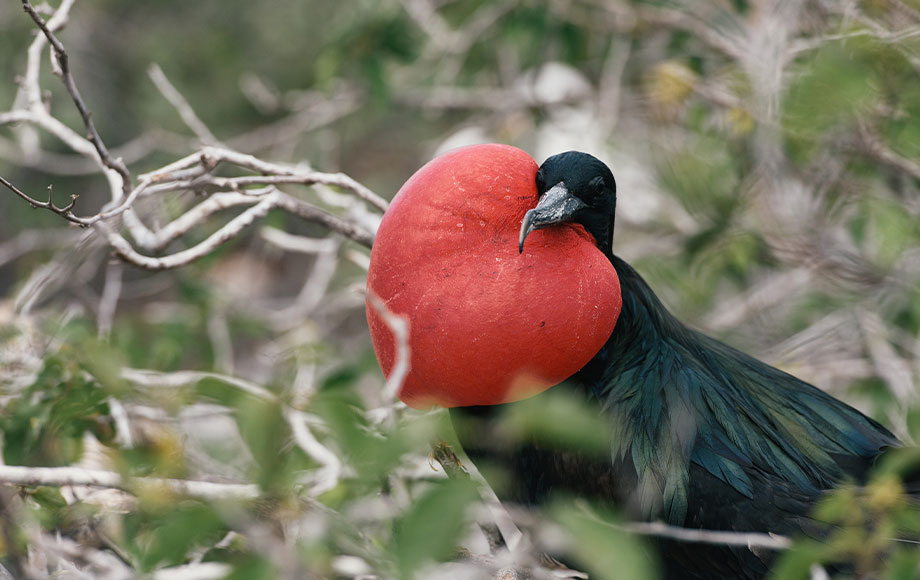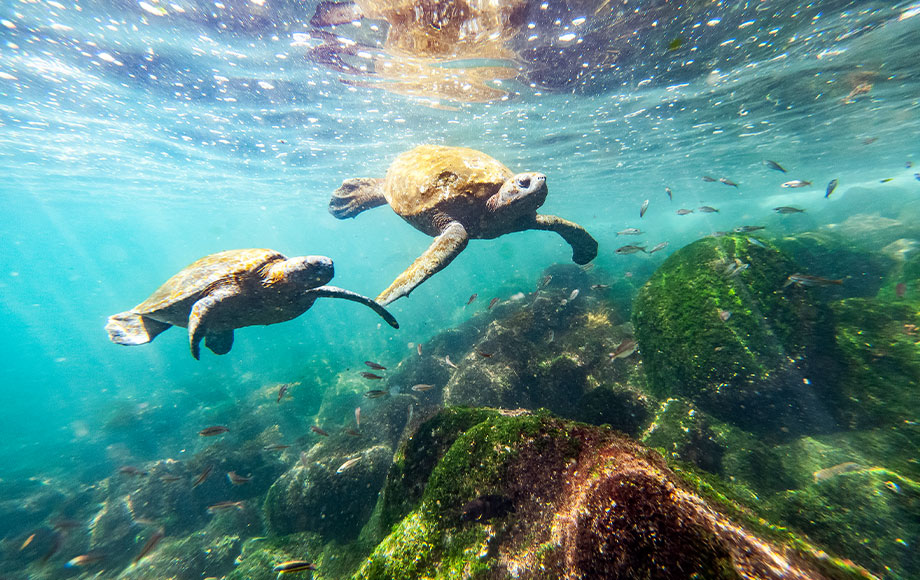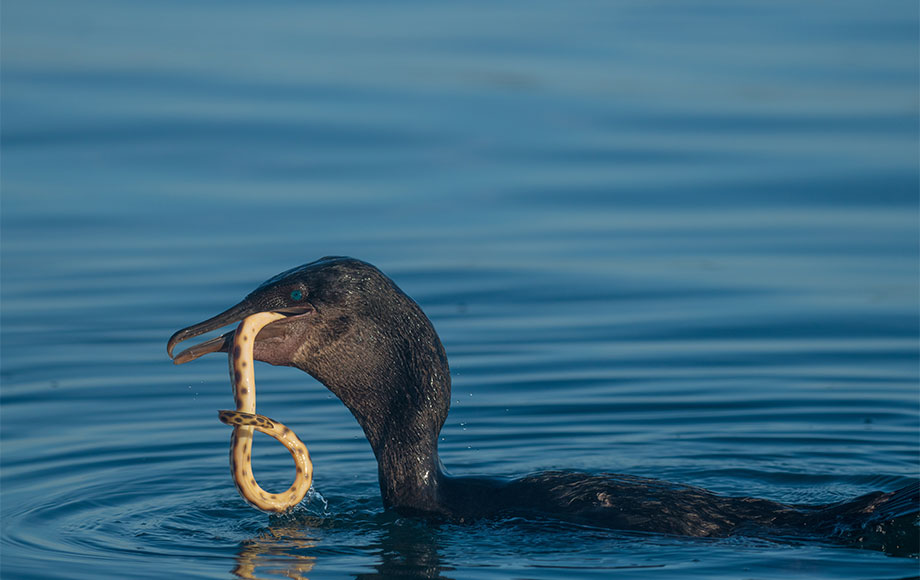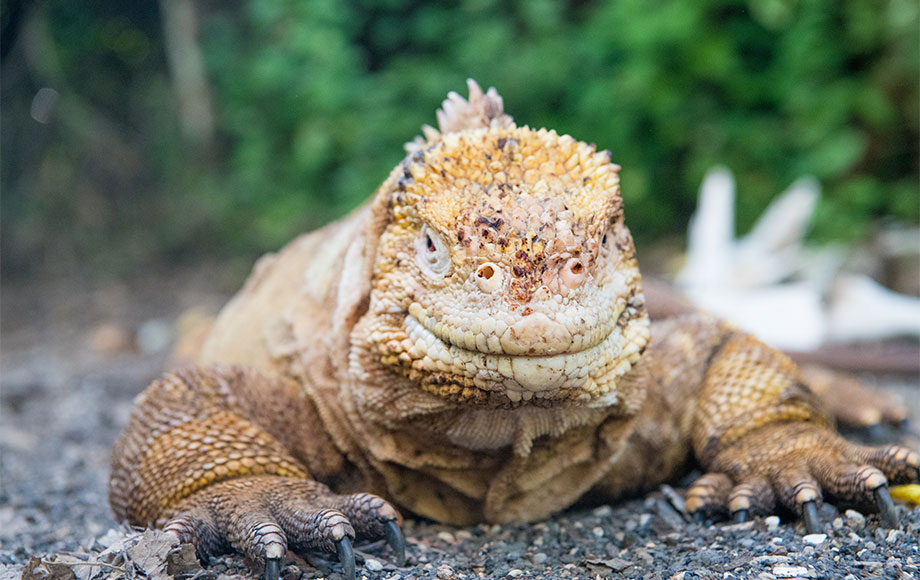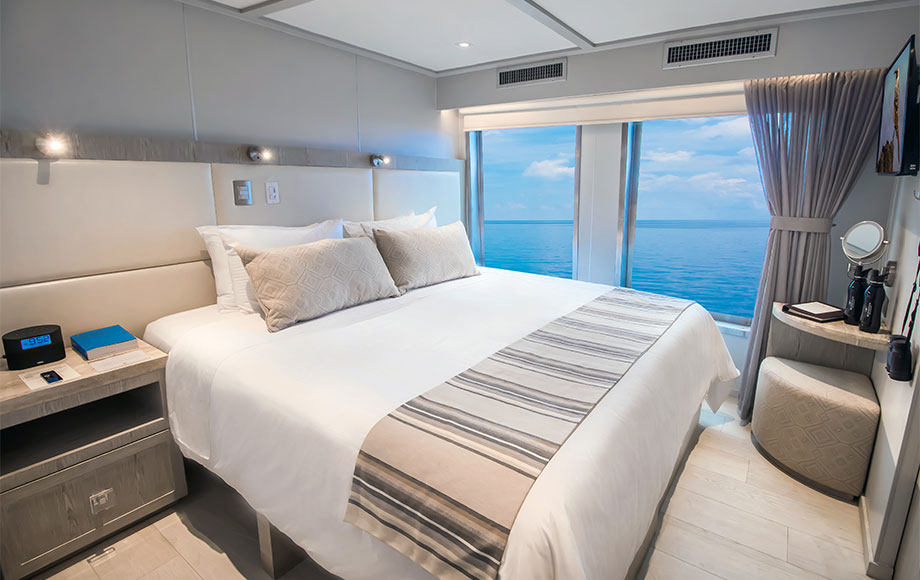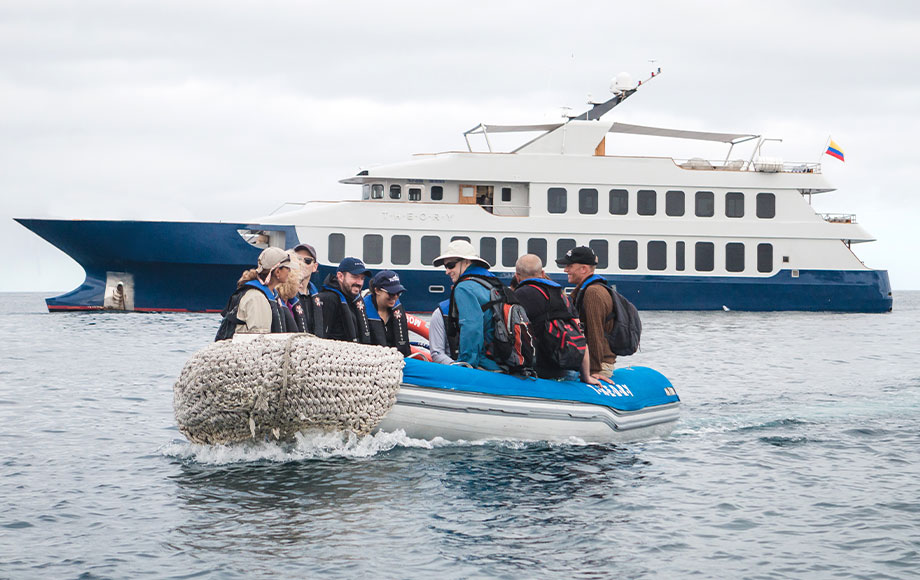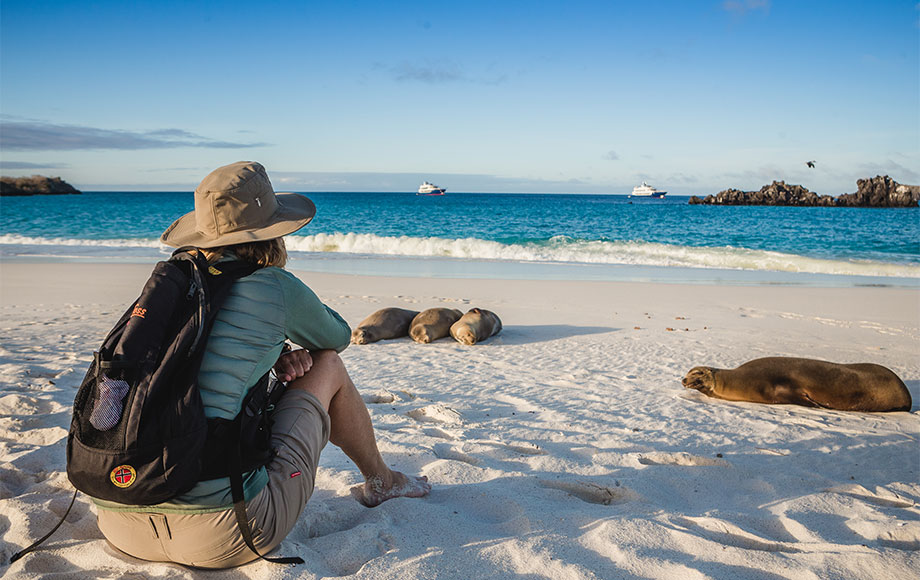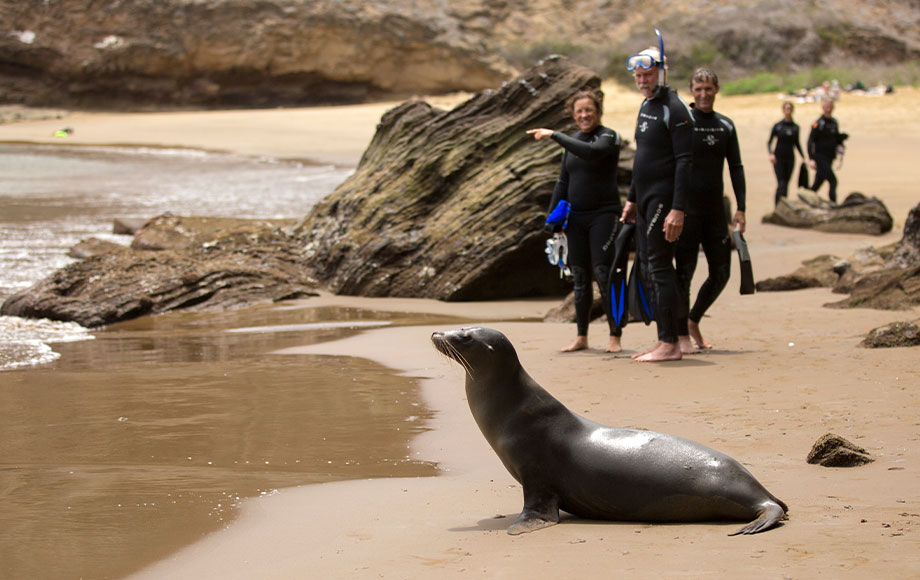Discover the unique diversity of the Galapagos Island’s on this ultra-luxurious 7-night cruise.
Cruise amongst the islands, anchor in quiet inlets and explore beaches crowded with birds, sea lions and iguanas. With its dramatic volcanic landscapes and unique wildlife, the Galapagos have been a fascination for scientists and travellers since Charles Darwin first visited the islands in 1835. Hidden 1,000 kilometres off the coast of Ecuador, the evolutionary changes that have taken place amongst the wildlife over millennia helped Charles Darwin form his theory of evolution, changing our understanding of the origins of life. As you sail from island to island, search for renowned species such as the marine iguana, Waved albatross and flightless cormorant.
The islands are influenced by ocean currents and dry winds that create a moderate desert-like climate, and are populated by different shrub and grass species, endemic cacti and mangrove forests. Birdlife abounds and wildlife have become so used to humans that you can get within a few feet of some species. The giant tortoise is a must-see when exploring the Galapagos Islands. Keep an eye out for bird species such as blue footed, red footed and Nazca boobies, frigate birds, flamingos, finches and Galapagos penguins. When walking on the island’s you will always have to watch your step in case you stand on a sunbaking land or marine iguana. Spend your days on guided walking excursions, swimming or snorkelling the crystal-clear waters or exploring the coastline by kayak or motorised-dinghy.
Please note: To reduce the impact of tourism, the national park authorities control the itineraries for all Galapagos cruise operators.
Tour details
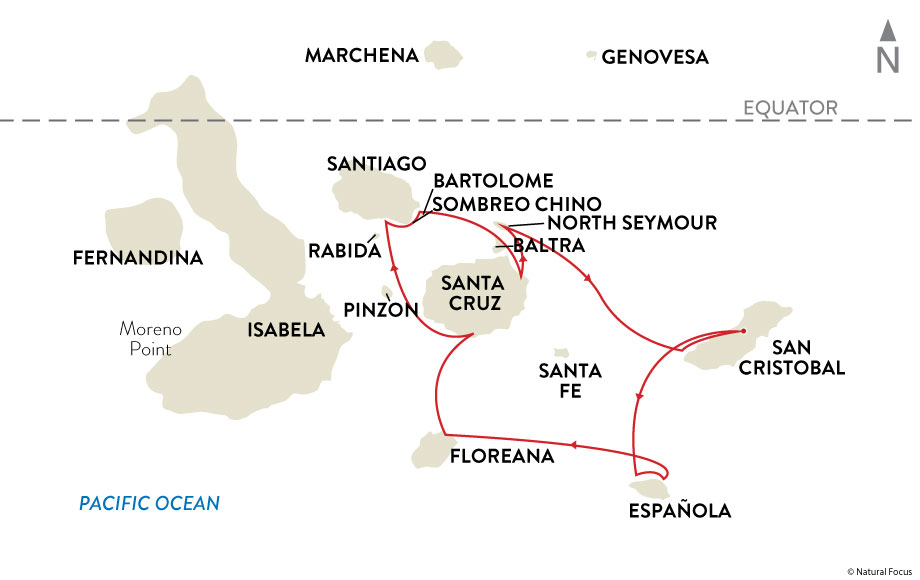
- Set foot on the island’s made famous by Charles Darwin
- Visit the Charles Darwin Research Station
- Discover the diverse birdlife including blue-footed booby’s, frigate birds and shearwaters
- View bachelor sea lions at South Plaza Island
- Swim and snorkel with sea lions and other marine species
- Be careful not to step on sunbaking iguanas or sea lions
- Marvel at the breathtaking scenery such as Pinnacle Rock
- Travel onboard the M/V Origin or M/V Theory – members of esteemed Relais & Châteaux collection.
There are daily flights (2 hours) from Ecuador’s capital Quito and the country’s largest city Guayaquil to Puerto Baquerizo Moreno on San Cristóbal Island. Both Quito and Guayaquil are serviced by a number of airlines directly including KLM Royal Dutch Airlines, American Airlines, Air France and United. Latam Airlines, the major airline in South America offers direct flights to a handful of major US and European cities.
Itinerary
Beaches & Bays
8 Days / 7 nights
Please note: This itinerary is an example of what you may do and see. Changes to the itinerary may occur without prior notice due to readjustment of National Park policies, weather conditions, seasonal changes or safety reasons. These decisions are oriented in terms of passenger safety and in the interest of the islands’ conservation and protection.
